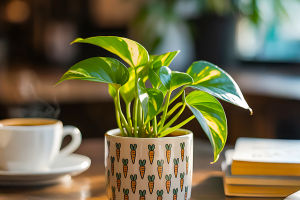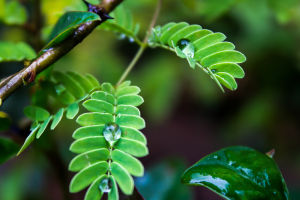Plant Life Cycle
Have you ever wondered how a tiny seed transforms into a beautiful, blooming plant? The journey from seed to bloom is a fascinating process, and understanding it can deepen our appreciation for the plants we grow around us.
In this article, we will explore the life cycle of plants, from the moment the seed is planted to the blossoming of flowers. We'll also share some tips on how we can help this process along, ensuring our plants thrive every step of the way.
Step 1: The Seed – Beginning the Journey
Every plant starts as a seed. These tiny packages of life hold all the information needed for a plant to grow, including its genetic blueprint. When a seed is planted in the soil, it begins the process of germination.
Germination occurs when the seed absorbs water, causing it to swell and break open. Inside the seed, the embryo plant starts to sprout. For many plants, this stage happens when the conditions are just right—adequate moisture, warmth, and oxygen. If any of these factors are missing, germination can be delayed or even prevented.
During this phase, the seed also develops a small root, called the radicle, which grows downward to anchor the plant and begin absorbing water and nutrients from the soil.
Step 2: The Seedling – First Signs of Life
Once the seed has sprouted, it enters the seedling stage. At this point, the plant begins to develop its first true leaves and starts to photosynthesize. The process of photosynthesis allows plants to convert sunlight into energy, which is essential for growth.
As seedlings grow, they rely heavily on their stored energy, which was provided by the seed itself. However, as they continue to develop, they begin to need more nutrients from the soil. This is where proper soil care and the right amount of sunlight become crucial.
At this stage, it's important to ensure your plants are getting enough light—too little, and they may become leggy and weak. Too much direct sunlight, on the other hand, can lead to sunburn.
Step 3: Vegetative Growth – Building Strength
In the vegetative stage, plants start to focus on growing leaves, stems, and roots. The plant's goal during this phase is to get as large and strong as possible so it can eventually produce flowers or fruit.
The roots continue to grow deeper into the soil, searching for water and nutrients. Meanwhile, the leaves expand and mature, enabling the plant to produce more energy through photosynthesis. At this stage, we often see the plant growing rapidly, especially if it's well-fed and getting plenty of sunlight.
Watering and fertilization are key during this stage. Plants need the right balance of nutrients to support strong growth. Over-fertilizing, however, can lead to burnt roots and reduced growth, so it's important to follow proper guidelines.
Step 4: Flowering – Reproduction Time
After a period of vegetative growth, the plant enters the reproductive phase: flowering. This is the most exciting stage for many gardeners because it marks the plant's ability to produce seeds for the next generation.
When a plant flowers, it typically attracts pollinators like bees, butterflies, and birds. These pollinators transfer pollen from flower to flower, facilitating fertilization. The fertilized flowers eventually develop into seeds, ready to start the cycle all over again.
While some plants, like annuals, flower in a single season and then die, others, such as perennials, can flower multiple times throughout their life cycle.
Step 5: Seed Dispersal – Nature's Plan
Once the flowers have been pollinated, they begin to produce seeds. These seeds are often dispersed by wind, water, or animals, allowing the plant to spread its offspring over a wide area.
Some plants have developed interesting mechanisms to help with seed dispersal. For example, dandelions use the wind to carry their seeds far and wide, while other plants rely on animals to transport seeds in their fur or digestive tracts.
Seed dispersal is crucial for ensuring that the next generation of plants can grow and thrive in new areas. Without this process, plants would be limited to growing only where they were originally planted.
Step 6: Dormancy and End of Life
Not all plants live forever. After flowering and seed production, many plants enter a dormant phase, particularly perennials and trees. During dormancy, the plant's growth slows down, and it conserves energy for the next growing season. This is common in climates with cold winters, where the plant essentially "rests" until conditions are favorable again.
Annual plants, on the other hand, complete their entire life cycle within one year—germinating, growing, flowering, and dying within a single season. Their seeds, however, will continue to carry on the cycle in the following year.
Conclusion: A Continuous Cycle
The life cycle of a plant is truly remarkable and full of fascinating stages. From the moment a seed is planted in the soil to the blooming of a beautiful flower, plants go through various stages of growth that require care and attention. By understanding these stages, we can better care for our own plants, ensuring they thrive and produce new life year after year.
Whether you're a seasoned gardener or just getting started, we can all benefit from learning more about the plant life cycle. Have you noticed any of these stages in your plants? Share your thoughts with us! We'd love to hear about your experiences growing plants in your own garden.
-
 Indoor Plant Care EssentialsA Complete Guide to Help Beginners Care for Indoor Plants!
Indoor Plant Care EssentialsA Complete Guide to Help Beginners Care for Indoor Plants! -
 Shy Plant WonderExplore the fascinating world of Mimosa pudica and how its "shy" nature captures our imagination!
Shy Plant WonderExplore the fascinating world of Mimosa pudica and how its "shy" nature captures our imagination! -
 Coconut Ocean JourneyHow Do Coconuts Travel Across Oceans Without Sinking or Getting Spoiled? It’s a Natural Survival Superpower!
Coconut Ocean JourneyHow Do Coconuts Travel Across Oceans Without Sinking or Getting Spoiled? It’s a Natural Survival Superpower!
Contact to : xyjph123@gmail.com
Privacy Agreement
Copyright © boyuanhulian 2020 - 2022. All Right Reserved.
Privacy Agreement
Copyright © boyuanhulian 2020 - 2022. All Right Reserved.